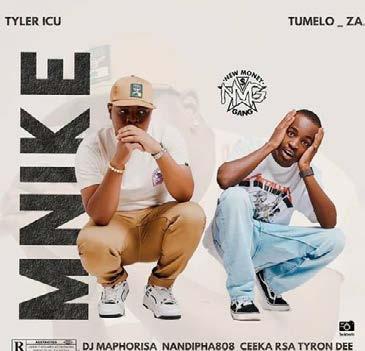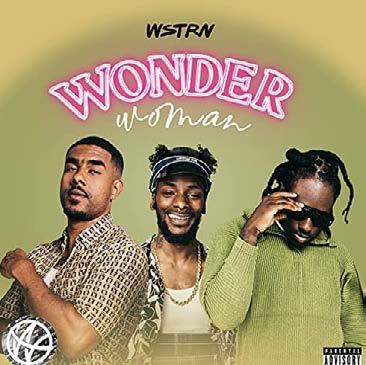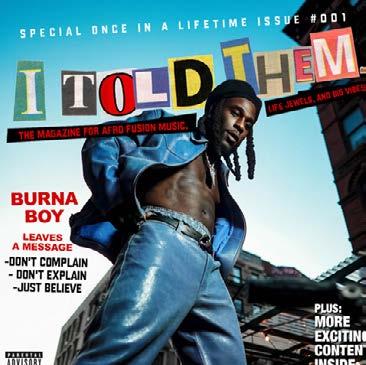

FLAWSOME’S LEADING LADIES









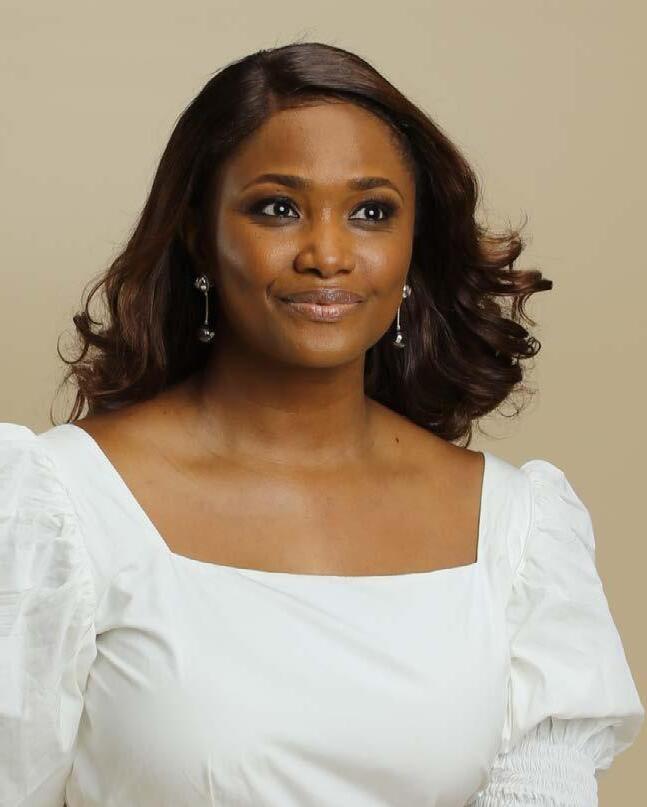

IMakeup: Zaron
nternational Women’s Day is set aside to honour women and reflect on their struggles; this year’s theme is Inspire Inclusion. A theme about inclusion in all aspects for women: It is a call to value diversity and create an environment where each woman’s voice is heard. Inspire Inclusion as a theme captures the need for a more inclusive world. Our cover personalities are the women from Showmax’s hit drama series, Flawsome Bisola Aiyeola, Sharon Ooja, Ini Dima-Okojie, and Enado Odigie; they discuss their different roles as the characters they play in the series. Each character has their struggles, but at the end of the day, there is light at the end of the tunnel. They also shed some light on this year’s International Women’s Day theme. You can read their story on pages 8 through 10.
It’s been very hot these days, so our fashion pages shed some light on appropriate clothing for the weather. You can be stylish in the heat. Think of it as summer. Go to pages 14 and 15 for this.
Our beauty page discusses the difference between body lotion and face cream, highlighting reasons why you shouldn’t use your body moisturiser on your face. See page 7.
Page 3 is interactive; click on the page title to take you to the page you would like to read.
Click on the link beneath the QR codes on page 16 to download the playlist. You won’t regret it. Until next week, enjoy your read.
@onahluciaa
+ 2349088352246
AUSTYN OGANNAH
PUBLISHER/EDITOR-IN-CHIEF
Executive Editor: Onah Nwachukwu @onahluciaa
Lifestyle Editor at Large: Eki Ogunbor
Online Editor: Ntianu Obiora
Writer: Johnson Chukwueke
Graphic Design: Olaniyan John ‘Blake’
Digital Media: Oladimeji Balogun
Guest Art Director: Sunny Hughes ‘SunZA’
www.thewilldowntown.com

07
12 CURATED CHAOS FASHION BEAUTY
Can You Use Body Moisturiser on Your Face? What to Know
8-10
COVER #SWEETGIRL DOINGS
11
Flawsome’s Leading Ladies There’s an Asa Song for Every Kind of Love


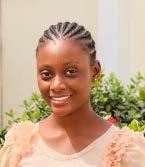
Odun Ogunbiyi @oddbodandthecity
- Contributing Editor
Logging Off
DOWNTOWN CONFIDENTIAL
16
13 14-15 REVIEW
8 Erogenous Zones And How to Stimulate Them
Stylish Tips to Help You Beat The Heat Without Sacrificing Fashion
Bob Marley: One Love



Odunayo Ogunbiyi is an ex pharmacist with a passion for food and pampering. Writing about her exploits wherever in the world she may find herself is just her way of staying sane in this zany world.





Boluwatife Adesina @bolugramm
- Contributing Writer
Boluwatife Adesina is a media writer and the helmer of the Downtown Review page. He’s probably in a cinema near you.


She is phenomenal Her story telling, relatable, real and true to self! Thank God for her I love this lady so classy and pretty



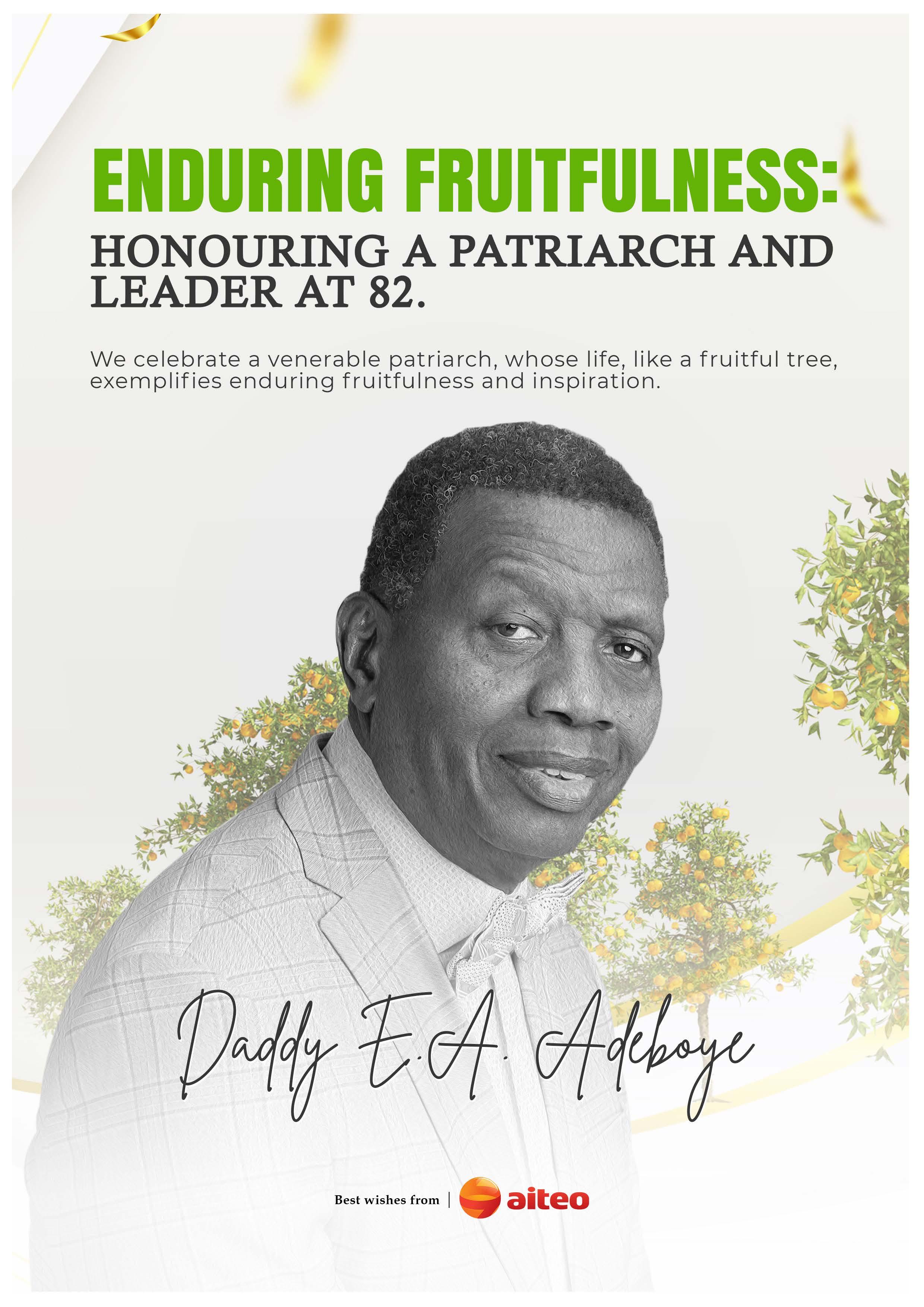
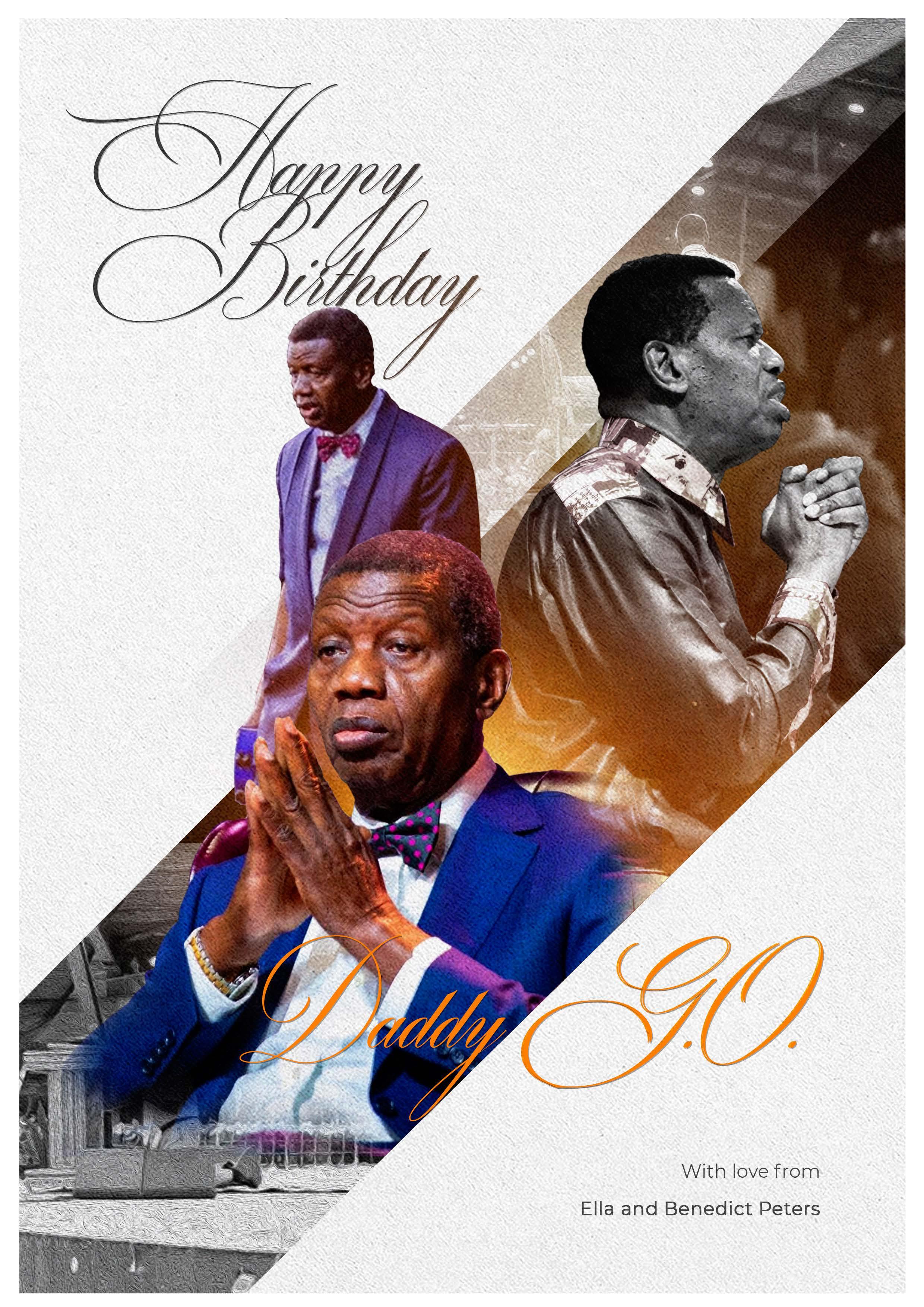
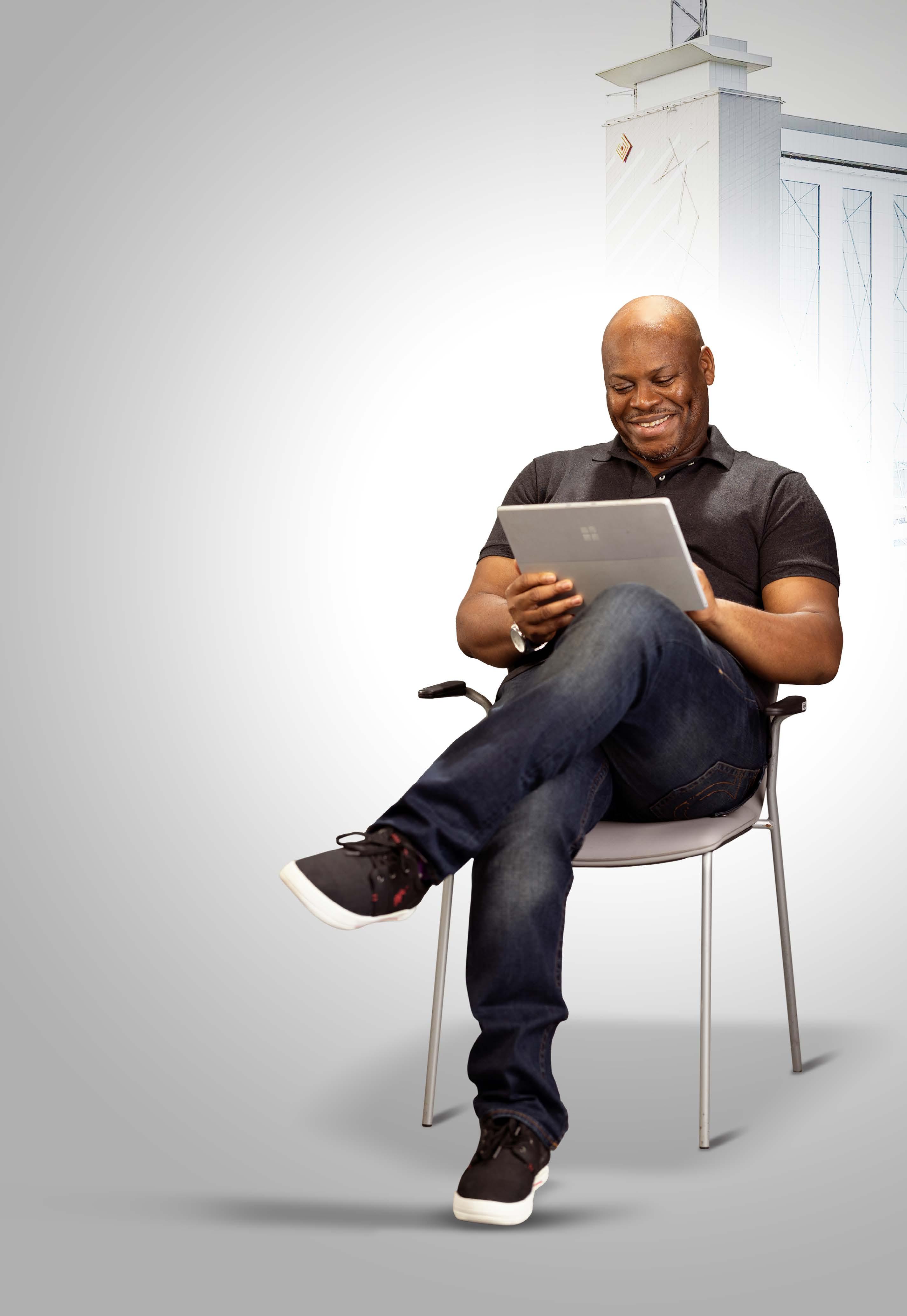
Face and body moisturisers may look identical, and sometimes, it gets tricky to differentiate the two, especially when they are out of their bottles, tubes, or pots. Well, even though they may seem to look the same, they are very different, and there are reasons why you shouldn’t use your body skincare from head to toe.
Due to our facial and body skin differences, face, and body moisturisers are formulated for various purposes beyond just hydrating and softening. Body moisturisers are formulated to address concerns like firming, cellulite, or spider veins. While on the other hand, face moisturisers are formulated to focus on concerns like pores, dark spots, oiliness, wrinkles, and fine lines. Body formulas are made with many ingredients that are often too heavy for the face. Apart from that, some body moisturisers contain fragrances, which can irritate the facial skin, especially if you have sensitive skin. On the other hand, face creams or moisturisers contain more specialised active ingredients that cater to delicate skin, which is why they are always expensive. Beauty experts explain that the high price tags of face skincare products are due to the thorough testing those ingredients undergo. They are screened not only because of the sensitivity issues but also to prove they can do what the brand says they will, like reduce pore appearance or minimise dark circles.
REASONS WHY YOU SHOULDN’T USE BODY MOISTURISER ON YOUR FACE?
1
Body lotions contain a thick body formula, and if they are applied on the face, not only will your facial skin find it difficult to absorb, but it will also attract a lot of dust and dirt, clogging your pores and eventually leading to acne.
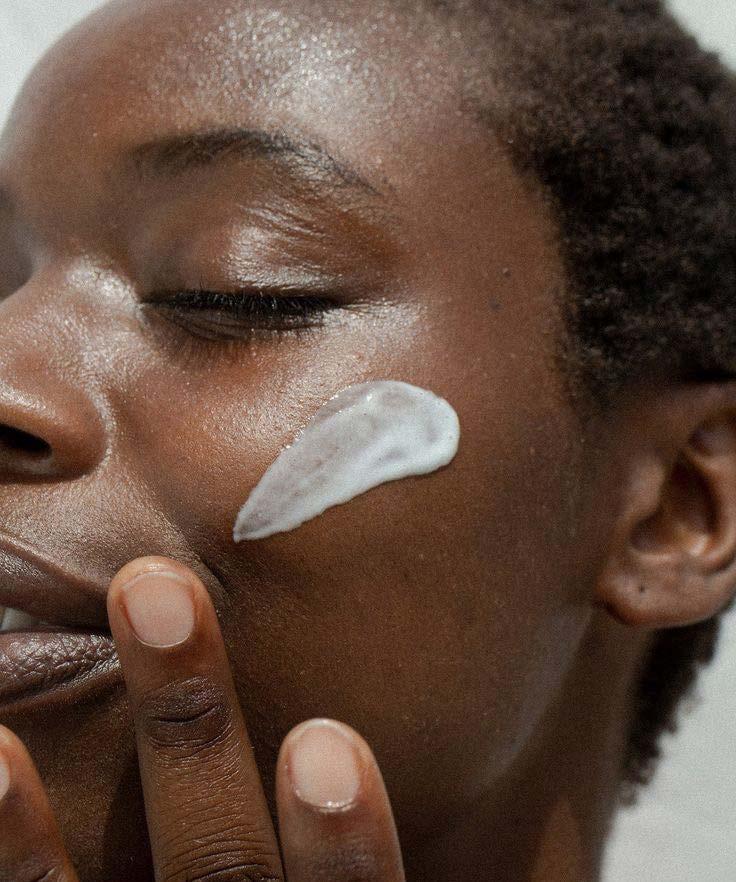

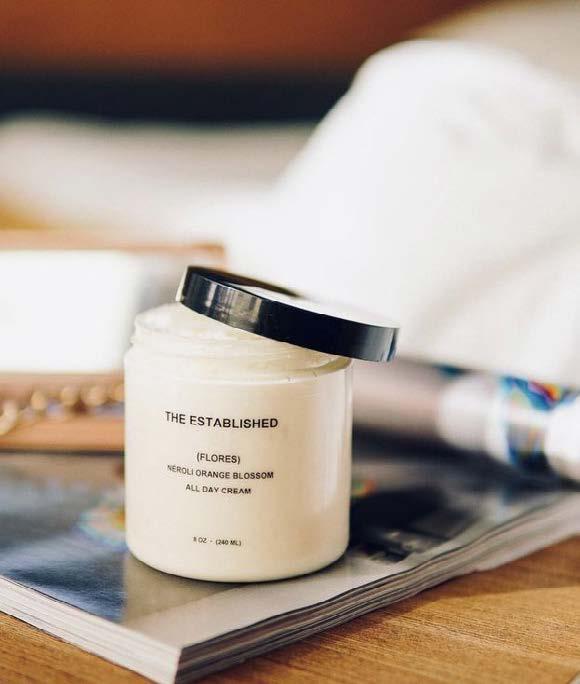


2
When applied to the face, body moisturisers can cause allergic reactions on the delicate skin of your face. Body lotions contain certain chemicals and ingredients that are far more potent and can be pretty harsh on your facial skin, causing redness and rashes, especially on sensitive skin.
3
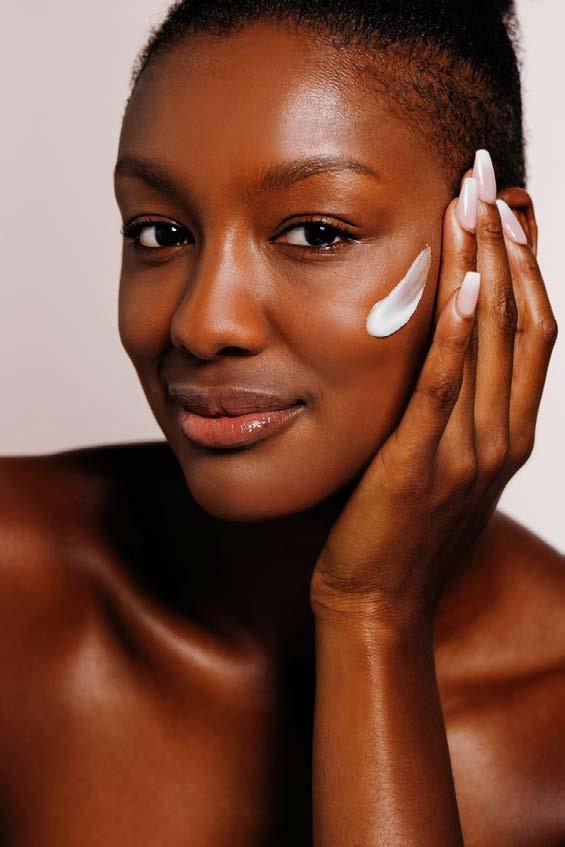
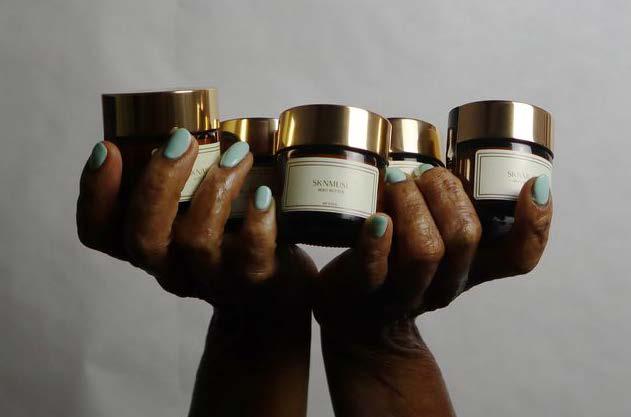
Body moisturisers are made with artificial fragrances, and when applied on the face, they can trigger allergies on your face.
Even though using body lotions on your face every so often won’t kill you, it is important for you not to make it a habit. Always try to follow directions when it comes to skincare or makeup, just as you would with any medical prescription. If you are confused or have any questions about the best options for your skin, a dermatologist should be your go-to guide on figuring out a personalised routine.

It’s important to understand the significance of International Women’s Day, an occasion that has global resonance. This day, marked on the 8th of March annually, is not just a time for celebration but also for thoughtful reflection on the struggles and achievements of women all around the world. This year’s theme, “Inspire Inclusion,” strikes a deep chord as it promotes women’s participation and acknowledgement in all aspects of life. It serves as a call to action for dismantling obstacles, valuing diversity, and creating an atmosphere where each woman’s voice is heard and honoured. This theme captures the spirit of the ongoing struggle for
a more inclusive society in a world striving for equality.
Amid the excitement surrounding International Women’s Day, our spotlight turns to the incredible women who star in the Showmax drama series Flawsome. The main actors, Bisola Aiyeola, Sharon Ooja, Ini DimaOkojie, and Enado Odigie, have forged their routes in the complex Nigerian film industry. Not only have these gifted ladies elevated the drama, but they have also come to represent achievement and resilience. The journey of Bisola, who sparked interest in acting after her outstanding performance in the Big Brother Naija house,
Sharon, who unexpectedly dabbled in acting during a photo shoot, and Ini Dima-Okojie, who went from investment banker to an acclaimed actress—all serve as examples of the perseverance of women who follow their passions. With her career as an actress, model, and businesswoman, Enado Odigie exemplifies the diversity of skills that women in the entertainment industry can possess.
In this interview with THEWILL DOWNTOWN’s Dorcas Akintoye, our cover personalities speak about their journeys, obstacles they have overcome, and the growth they’ve experienced since the beginning of their careers. They also discuss their thoughts on International Women’s Day and its theme, “Inspire Inclusion.”
Throughout your acting career, you’ve worn many hats. Can you share a moment or role that challenged you the most and brought out a new facet of your talent?
So I’d say two of them. There’s one I remember vividly playing: A lady who couldn’t speak. She was mute due to certain experiences in her life, that was in the movie Eventually, she did find her voice. I am usually talkative naturally, but on that project, I had to be quiet for a very long time and had to use more of my facial expressions to relay my messages. That was a part of me that I didn’t know existed, you know, being quiet and being able to express oneself and having the people watch, believe your expressions, so there’s that.
Then there’s also being the host of Feud first female African host ever on the franchise. That was a bit challenging in the sense that I had to take on a new role of being host, being spontaneous, being able to engage the families and hold the crowd in, and at the same time, making the show really interesting. So those two, I’d say, brought out a new facet of my talents.
Flawsome she found out that she wasn’t her father’s chosen successor after his demise. Can you tease some unexpected twists or turns viewers can expect from her character in Season 2?
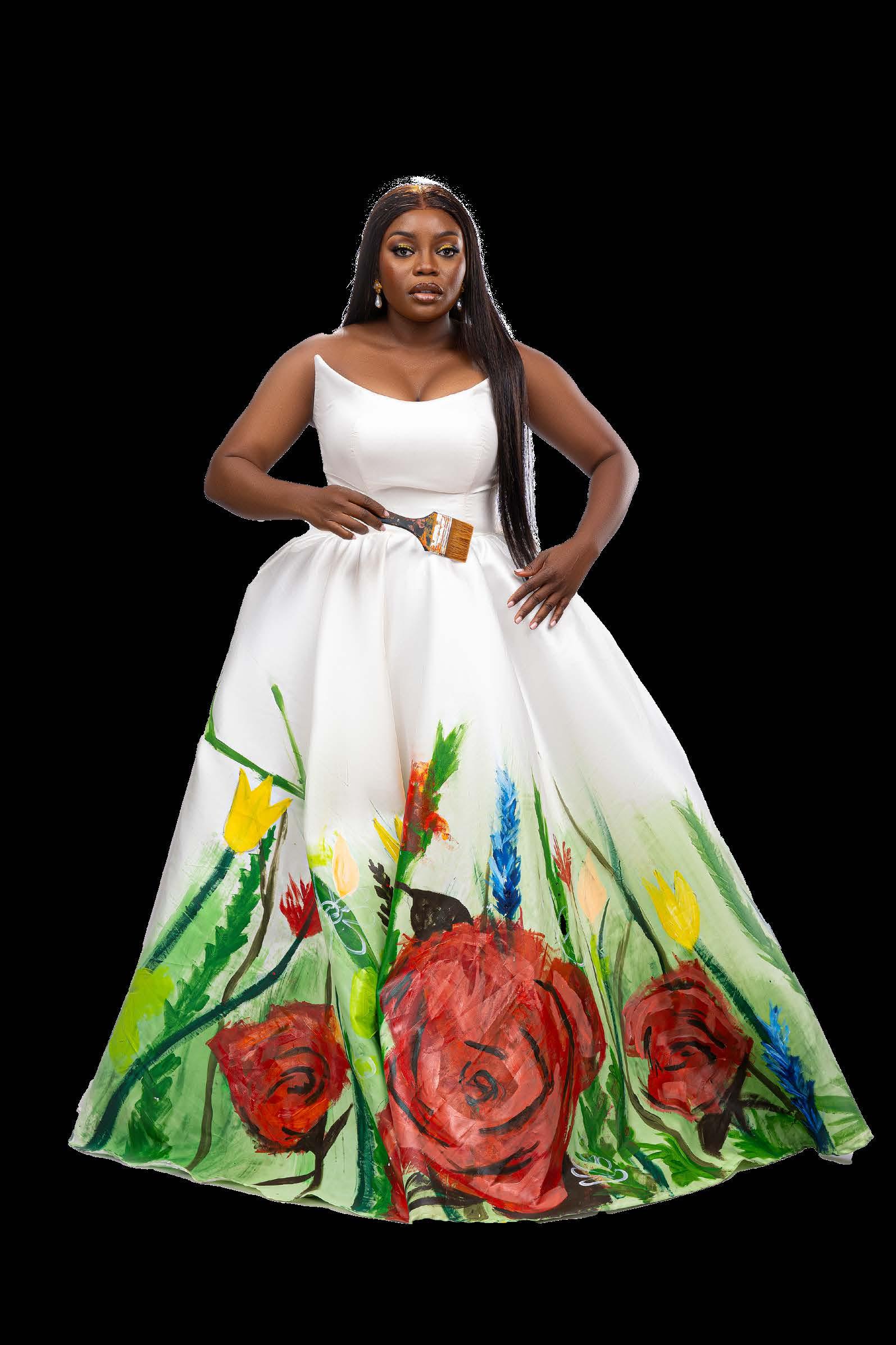
For Flawsome Season 2, I would like everyone to watch it first; I don’t want to let anything out of the bag. But from the few episodes that are out already, we can see that Ifeyinwa has her battles she is fighting. We also see that she’s not backing down from her fight with Timmy. She’s not giving him any time or chance at all. I’ll just keep it short and say, hopefully, fingers crossed, there’s light at the end of the tunnel for Ifeyinwa.
Portraying Ifeyinwa in Flawsome, you tackled a character with significant challenges. Can you share the emotional and mental aspects you delved into to bring authenticity to Ifeyinwa, and how did you navigate the complexities of her storyline?
Thankfully, as an actor, and I think for all actors, many of us have been able to draw the line to know where fiction and reality meet. There’s a huge line, and they shouldn’t cross each other. Ifeyinwa dealt with a lot, but she did seek help eventually. In bringing authenticity, you become the character at that point in time. Thankfully, she’s fictional, and I try not to bring those fictional characters into my personal life. Bisola is different from Ifeyinwa. The way Bisola would handle her challenges is different from the way Ifeyinwa would handle her challenges. So I try not to let them cross or spill into each other, and I think it’s over time and experience that has taught me to be able to do that. So I try as much as possible to let Ifeyinwa be on set and Bisola be in the real world.
In advocating for women’s confidence and beauty, how do you think entertainment can play a role in reshaping societal standards and promoting self-love?
It can’t be sung enough, it can’t be said enough, the entertainment industry can portray all womencolour, shape, age, women with all kinds of special abilities, from different walks of life, we can portray them more. So it’s all about inclusivity, portraying them in whatever fictional creation that is going
on, that is being watched by a certain woman from a certain walk of life would make her feel like ‘oh there’s somebody like me out there who exudes confidence’. So I think the entertainment industry can just touch on all shapes, sizes, looks and showcase all of them to know that they’re all included, and people on the outside who get to watch and see these women love themselves would also pick a thing or two to love themselves
As we celebrate International Women’s Day under the theme “INSPIRE INCLUSION,” what steps do you
is going to be like - how people would act in the future, the types
In the second season, we get to see another side of Ramat. We really understand what her values are, what matters to her and how much she is willing to fight to make her marriage work.
In the context of Ramat’s character, what discussions or
should just take more steps to give women more empowering roles. Women are beautiful, amazing managers, I don’t think there’s any industry that a woman’s input has not been important, but in some cases, you know, they’ve always been the minority, but inclusion would really help, and I believe the entertainment industry has more inclusivity in all spheres, from directing to being an ED, sound to acting, if there’s more that we see and it’s a bit more diversified, I think the sky is the starting point.
Transitioning from finance to acting is quite a leap. Can you share a specific role or moment that affirmed your decision to pursue a career in the entertainment industry?
Quitting my job as an investment banker and enrolling in New York Film Academy really set the tone for my career in the film industry. I remember one of the first classes we took was an ‘Acting for Film’ class. It really piqued my interest, and I totally fell in love with acting during my time at film school. I knew then that that was what I wanted to do with my life. The only question was, “how do I start?” (laughs). Your character in Flawsome, Ramat, faced challenges in Season 1. Can you provide a glimpse into Ramat’s storyline in Season 2 and the growth she undergoes?
My character in Flawsome (Ramat) has a lot of layers. She was confident, passionate and fearless, but she also had a bit of a traumatic past that plagued her. And we see that really play out in season 1.
The series touches on really important themes, and with Ramat’s character, one of the themes it touches
foundation of any relationship. But we also to be had. I recently got married myself, you embrace the challenges of portraying Oh going to film school really shaped the way I approach preparing for a for a role. I’m able to go through me to understand the ins and challenge stereotypes
I think there
versatility
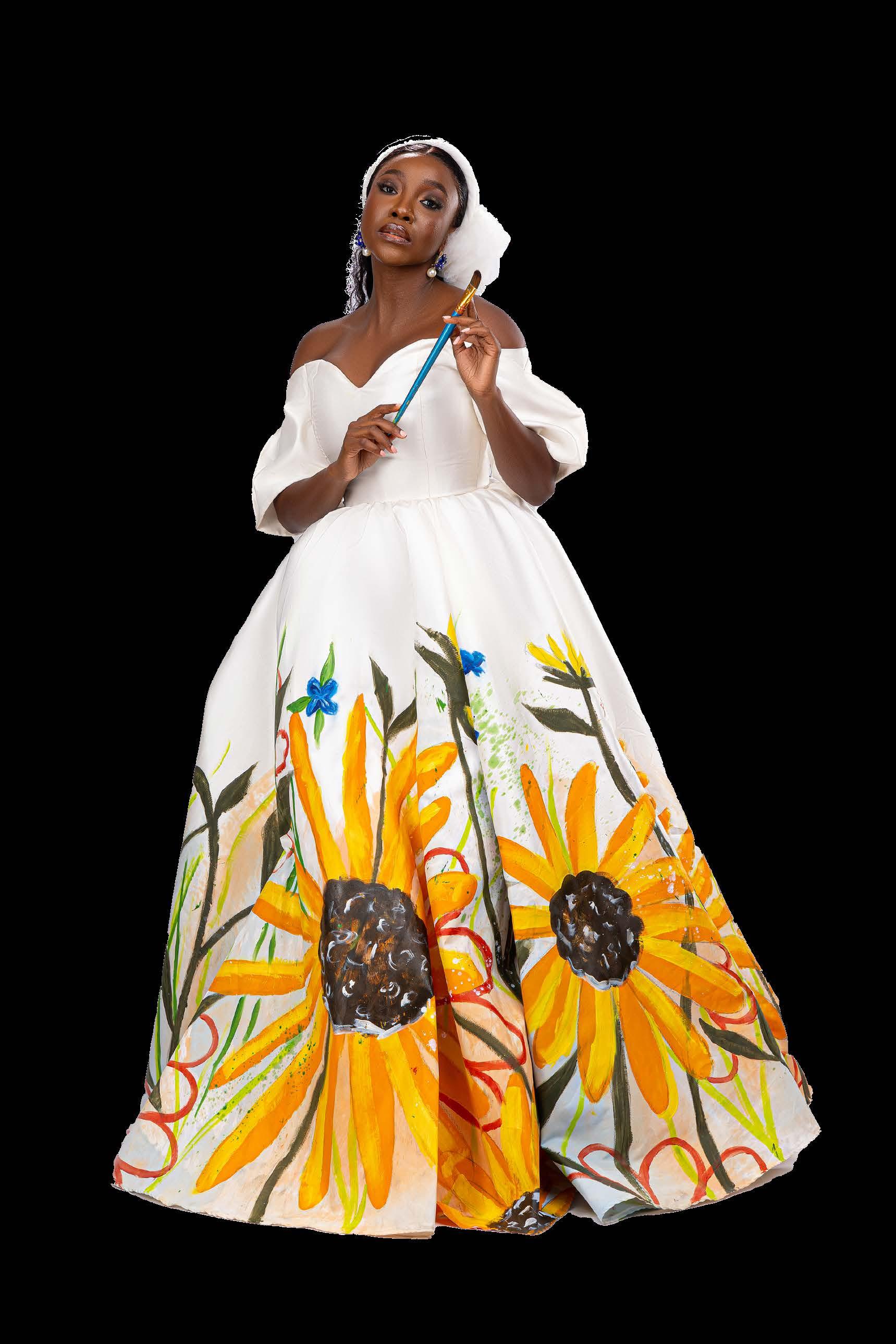
stories that capture that.
Can you recall a specific moment or project that made you realise acting was your true calling?
I think my work in Oloture was one of my first moments when I realised that you have to immerse yourself in a project. As an actor, you have to always immerse yourself; you put yourself in the position of the character, but that character was so daunting from the first moment we started filming, and it made me realise that this is what I’m here to do because I immersed myself in it.
Your character Shalewa in Skinny Girl in Transit gained immense popularity. How has this impacted your career, and how do you choose diverse roles to challenge yourself?
My role, Shalewa, was my first proper acting gig, and the beauty about acting is that you’re told not to act but flow. So as much as I had no training or acting experience, I knew that worked for the character because she was supposed to be extremely lackadaisical and easy-going. If you look at the trajectory of that character and how she has grown, you’ll see she’s actually grown with me in
my career as a person and my performance. So it has impacted my career in so many ways because there’s a whole bunch of people, even in the diaspora, who have become my fans and who love me all because of that one character.
In terms of choosing diverse roles, as you grow as an actor, you realise challenges you as you move, as well as what will give you fulfilment. Acting is beyond just playing role; it’s about telling someone else’s story, and when you read a script, you ask yourself, “How much of this person’s story am I willing to tell? How well do I want people to connect with this role?”

That’s where I am in my career now. I read scripts, and I understand why a character has to do what they have to do. There are some scenes you read and ask yourself, “Is this necessary? is this not necessary?” So that’s how I’m able to pick what helps me diversify my character because I ask myself how much of this am I willing to impact myself in because, like I said, each character impacts you as a person.
Flawsome showcases Ivie’s breakthrough in fashion. Can you hint at the excitement or challenges Ivie faces in Season 2, leaving viewers eager for more?
Ivie’s character is one I feel every girl can relate to because every girl at some point has been an Ivie, where she is trying to figure out what to do with her life and going through emotional stuff that is affecting her work. Ivie’s breakthrough in fashion is a very beautiful one because it just shows you that if you put your heart into anything and you keep building at it, you’ll get better.
So, in season 2, you’ll see Ivie actually putting so much effort into her growth and making a way through the fashion industry while dealing with a lot of issues with social media, which I feel a lot of people can relate to in real life. So there’s so much that comes with Ivie this season, and I want everybody to hang on to her.
How do you think Ivie’s character resonates with aspiring individuals in similar fields, talking about how she struggled to finally get her breakthrough in the fashion industry?
One thing I noticed happening with Ivie in the fashion industry was that she dealt with the typical issue of having a boss who is threatened by your strengths. When you’re in a work space, everybody knows your strengths, and if you remember, in season one, her boss was so taken by how well she did with her sketches and designs, and I feel like this is one thing that every fashion designer, especially when they’re growing, faces. They face issues with struggling to break out of the environment that has helped them. There is this imposter syndrome that comes with breaking out where you’re asking yourself, “What am I doing here? Do I belong here?” especially when growth comes from a very hostile environment like the one Ivie had.
I feel like one thing I love about her character is that it made people realise that there’s a light at the end of the tunnel. Ivie really wept last season; she really went through it, and this season, she’s broken out of her boss, and she’s doing very well by herself.
Regarding International Women’s Day, how do you believe your influence in the industry can inspire inclusion and I’m the queen of love and light, so I’ll speak for myself and the energy that I bring. I’m a firm believer in love, and I will say one thing I strongly believe and stand firm on is that everywhere you go, you should ask yourself what you want to be remembered for. Yes, I’m an actor, and yes, I’m popular, but I always tell myself I want to make a change. So I will always use my voice to speak positivity and love and to show that there are women out there who are gorgeous, doing well, love God and will always set a fantastic
I’m one of the firm believers that women should work hard and make a beautiful name for themselves with the voices they have. So, I would stand on the fact that my influence will always be positive as a strong, gorgeous woman in the industry. I believe there are people who look up to me, and by proxy of just being around me will be touched by my life and character. So, Happy International Women’s Day to everyone reading this, and know that I’m wishing you love and light.
How do you bring authenticity to your works as an actress?
It’s different things. Like a script, your director has an important role to play in how you bring your character to life because you can be on a great production, and if the directing is shabby, it might affect the end product. However, I think that for me, being an empathetic person already naturally makes it easy for me to connect with people and their experiences. So, when you are reading the script, you see the characters not just as characters on a page. They come to life, and depending on how well the story is written and being told, the image in your mind means that you connect with this person and the minute you can connect with their experiences, you can embody their feelings and own their feelings and thus you can bring them to life. So it’s a combination of things: The environment in which you are in, the way the story is written, the directing. All these things help influence the way you can connect with the story, with the characters’ experience from moment to moment, scene to scene, and that’s just what brings it to life.
What are the two main things you would address in this season?
I think the two main things that I can address without giving much away this season are that Dolapo has learned from her mistakes from season 1, and she’s trying to do better and make better career choices. However, she is still in a male-dominated industry and a very male-dominated world. So, she still has to combat those dynamics in bringing her job to life. She still has to deal with rivalry; she still has to deal with males, expecting that because she is a female, she should be less. She is not entitled. Masculinity is trying to intimidate her, as we have seen in a scene or two and she has to be strong and stand up for herself and say, “No, you are not just going to treat me right because I am a woman; you are going to treat me great because I’m great at what I
do.” These are things that translate in real life. I am entitled to certain rights because I am a human, not just because you are male and I am female. I am not entitled to what you choose to give me; I am entitled to what I have earned, and I have earned my stay, my space, and I would bask in the glory of everything that I have worked for, and you do not choose for me. You don’t determine what I am. I am the chief orchestrator of my story. I own the script of my life, and I determine how it’s going to go.
Playing Dolapo, what conversation of things do you believe her character opens up about women’s empowerment and the resilience required to overcome career obstacles? In a male-dominated industry and society, for a woman to thrive, she is going to have to work hard. She is going to have to be very confident, very daring. She is going to need to aspire to be more and then do the work. So when you put in the work, it is okay for you to make certain demands, “I will not be treated this way, I will stand up for myself, I will ensure that I do everything in my power to become a force to be reckoned with and I become that force.”
I will make sure that you will not belittle me with toxic masculinity. I am here to occupy space; I know who I am, and I am going to take up that space whether you are comfortable about it or not. I am not asking for your permission; I am stating that this is who I am, I am here to stay, I came, I saw, I am conquering, and I will continue to conquer. While I do so, I will lift others; I will take up other women with me because I will not go alone, just like the saying, we rise by lifting others, and so she’s not just a force for herself, she’s a force for others as well, making her impact in not just her industry but in her society.
How do you see the entertainment industry evolving to better support and represent women of all backgrounds?
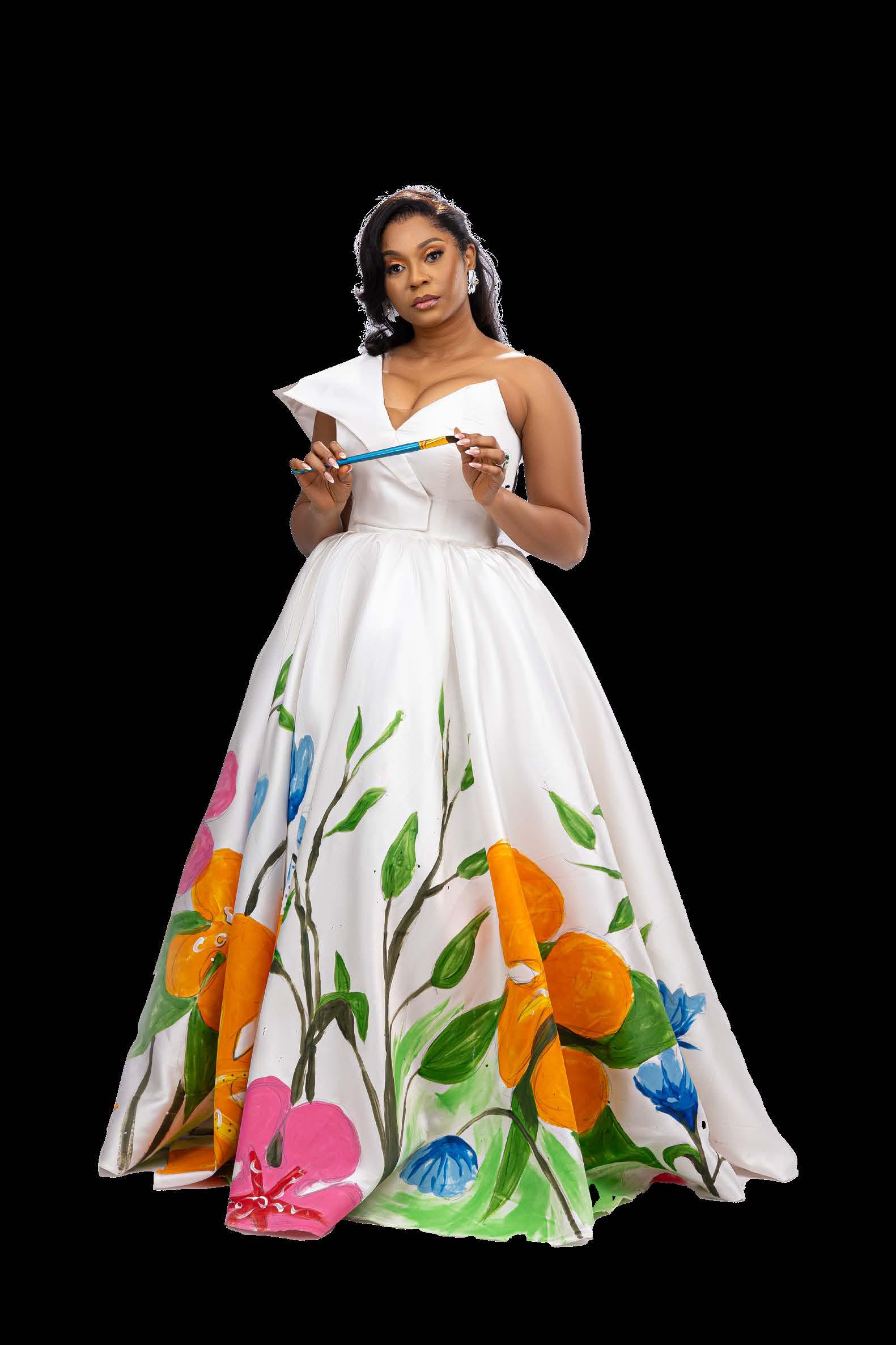
I believe that everyone has a place in this world and is equally as important as the next person. We all have a value we bring, and if we are bringing it to the subject of gender, there are more women than men in the world. It only makes sense that there are many women representing, if not for anything, the course, the needs, the requirements of the female gender. I have always been inspired by women both in history and even in storytelling who have strived, who have conquered, and who can inspire women of whatever age. I know I have been inspired by women like Oprah Winfrey, Funke Akindele, Mo Abudu, Kemi Adetiba, my mother, my older sisters and all the inspiring women in this world. They have all inspired me because these are all firebrand women who are thriving, making changes and making an impact in the world. I want to tell those types of stories, and I want to be a part of that movement that inspires
One of the things I like so much about Dolapo is that young women who approach me today want to be like her. They approach me and say, “There’s something about Dolapo; she is the type of woman I want to become.” She opens the eyes of those coming behind us, opens their eyes to the possibilities of all that they can be. To the girl child, that she can be more than what society has told her that
If you have been raised in an environment where they have said, all that you can do is all that we are willing to teach you or all that we can tell you, you can be. My society and my upbringing have shown me that I can be so much more, I could do so much more, and I can have so much impact on this world than just pass through like I was
So, I think that acting is one of those phenomenal ways. Film and media are the phenomenal ways and most impactful ways to create these types of influence and inspiration.

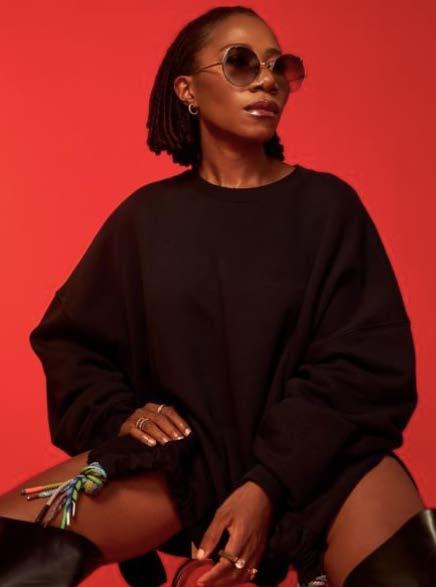
It’swomen’s month, and I’m so happy to kick off this significant time of the year with a fun article highlighting one of my favourite women, the talented songbird Asa. She’s my G.O.A.T (Greatest of All Time). Asa is someone I can listen to all day, every day, with every song and every album on repeat, with no skips but occasional repeats for some of my all-time favourites. With a cup of tea and a lit candle chilling at home or work while I get through my day with one task after another, Asa rides with me through it all. She’s the singer of some songs that could qualify as the “soundtrack to my life” at various stages of my life, and she may not know it, but she’s definitely helped me through some rough times.
with this one. Leaving the month of love into the month of celebrating women, this seemed like the perfect fit today.
I’ve picked five love stories or scenarios and paired them with some of Asa’s love songs, but more where they came from so maybe I’ll do a part 2 or make this a series? I really think someone should look into a musical featuring her songs, like Mama Mia, but instead of ABBA, it’d be Asa. If you steal this idea, you’re welcome; just include me somehow. I don’t know how, but I’d love to be a part of it.
Album: V
I don’t go where no love
Where my home o Find my way home
This is a song for free spirits who prioritize love and happiness for themselves first and foremost. It is a simple story of self-love: We should never go where we are not wanted or where we are not loved. Find your way home to love and comfort. You don’t have to put up with a love-less situation to make others happy at the expense of your happiness. After all, if you don’t prioritize loving yourself, you might find it harder to love others.


Album: V
Show me off, Show me to the world
I wanna live my life with you

Album: V
They say blood is thicker than watеr Some friends are loyal than brothers (true true)
It’s whom I run to when life sometimes gets hard
Platonic love, this song celebrates true, genuine friendship. Through life’s ups and downs, you know you can count on this one true friend who sticks closer than a brother.
Album: Lucid
Baby, you’ll never know
Until we try, until we try this lo I’ve been around the world
It’s ironic because I’m not a big fan of love songs, but when Asa sings about love, she has my whole heart. I don’t like to admit it, but I’m truly a lover girl at heart and obsessed with the way Asa sings about love. It’s not corny, it’s not tacky, it’s not overbearing and exposed, but it’s deep, and it’s real, and it’s just how I love to listen to love. Please take your Westlife and the rest away from this place. LOL. I could write mutiple worship articles about Asa, but we’d start
But you’re the only one my heart
The only one my heart beats for
This song feels like besties (or two people who are fond of each other) who want to take it to another level but are afraid to spoil the friendship they’ve built. But the only way to truly know if love can succeed is by giving it a chance and putting in the effort rather than letting fear hold you back.
A sweet love song, a bold proclamation of love, however, she’s begging to take this relationship to a new level. What may have started as a secret relationship is no longer enough for her. This girl is in love and having the best time with her partner, but now she wants her partner to love her out loud.
Album: Lucid
One of us must have a last say
Words like dagger, we try to hurt each other
There’s no other way until one surrenders
We’ve been like this for days
Let’s go back to the beginning
This song explores the bittersweet nature of love. It’s a story of love that has gone cold, and now she’s longing for the relationship to go back to where it all began.
Slang of the week:
G.O.A.T.
Acronym for Greatest Of All Time
I’d love to know your thoughts! You can share them with me via DM on Instagram (@ekiogunbor) or as a comment on my Sunday collaboration post with THEWILL DOWNTOWN (@thewilldowntown).
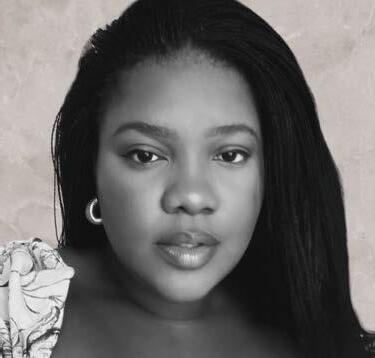

We’veall heard the term’ social media fatigue,’ while it might feel overused, the struggle is undeniably real. The constant bombardment of information, the pressure to present a perfect image, and the nagging fear of missing out if you aren’t endlessly scrolling was, and sometimes still is, my reality. It took a toll on my well-being, and I realised it was time for a change.
There were many contributing factors to my burnout, but one moment stood out as particularly revealing. Late-night doom scrolling had become a dangerous habit. The blue light kept me awake, and my mind raced through a never-ending stream of filtered lives, news headlines, and memes. The TikTok algorithm was especially seductive, promising “just one more video” that often stretched into hours of mindless consumption.
Retreating into my phone became a familiar pattern. It offered a haven, a place to immerse myself in a curated stream of entertainment, trivial pursuits, and virtual connections. It was easy to mistake this for genuine engagement with the world. I could lose myself scrolling through feeds, watching videos, or responding to notifications, creating a comforting illusion of productivity or connection. But it was often a facade, a way of numbing out the difficult emotions, complex issues, or responsibilities that awaited me in the real world. The longer I hid behind the screen, the harder it became to confront the messiness of my own life and the tools I desperately needed to navigate those challenges.
Celebrities, despite the glamour and perceived ease of their lives, face the same social media pitfalls as the rest of us. The quest for selfpreservation has sparked a notable trend: Highprofile figures are increasingly choosing to step back from the relentless public eye and curate a healthier relationship with their digital presence. For some, like Michaela Coel, this means completely withdrawing from platforms like Instagram. Others promote a balance, advocating for periodic social media breaks as a tool for mental well-being. This movement reflects a desire for privacy, authenticity, and control in a world where every move can be scrutinised and dissected online. It highlights a growing awareness that unchecked social media consumption can take a toll on even the most successful individuals, reminding us that no one is immune to the need for boundaries and self-care.
Sometimes, the only solution seemed to be deactivating my Instagram altogether. There’s undeniable peace in disconnecting from the noise, the comparisons, and the performative aspects of online life. But I’ve learned that complete withdrawal isn’t the answer either. It’s one thing to identify your issues, but it’s an entirely different beast to put that knowledge into action. Despite recognising my unhealthy patterns, the allure of social media often pulls me back in; it’s interwoven into my work and has become deeply ingrained in my routine. The idea of a full digital detox is appealing, but it’s not always practical. The key, I’m learning, lies in striking a delicate balance. It’s about setting stricter boundaries, silencing notifications, implementing time limits, and consciously choosing when and how to engage with these platforms. It’s about creating a digital environment that serves me instead of draining me.
It’s a constant work in progress, but ultimately, it’s about reclaiming my time, attention, and mental well-being without completely sacrificing the digital tools that shape so much of my professional life.
Furthermore, the future of social media feels uncertain, a landscape in constant flux. As we collectively grapple with the consequences of our

digital consumption, a question hangs in the air: How much more can we take? The lines between our online and offline selves are blurring, and with the rise of immersive technologies like VR, the potential for even deeper disconnection is alarming. Will future generations struggle to differentiate between curated feeds and the unfiltered complexities of real life? Will our ability to form genuine bonds wither as we seek comfort in virtual interactions? The future demands a shift. It’s time to reimagine our relationship with social media, reclaim our agency, and carve out spaces for genuine connection within ourselves and the world around us.

Have you ever had those tingly, full-body chills or an involuntary shiver when someone kisses your neck or strokes your forearm?
One of your erogenous zones was probably just engaged, so you’re experiencing the classic skingasm sensation. Erogenous zones, in case you were unaware, are essentially your body’s default arousal buttons; they are the body areas that, when touched, cause you to feel turned on and are extremely sensitive to touch. Indeed, the first thing that comes to mind when you think of erogenous zones is the areas between your legs, but there are a lot more of them. Females have 31 fundamental recognisable erogenous zones, whereas men have 25. This article lists the top eight erogenous zones for men and women. Remember as you read this that some of these may not apply to you, some may not help you, and some may make you purr like a kitten the moment they are caressed.
The thick layer of fat covering your pubic bone may not be something you often think about when it comes to sex, but it’s a hot area for a reason—it’s full of nerve endings, pheromoneemitting glands, and near to your genitals. Try lightly rubbing the area with your fingers or a vibrating device to stimulate it. You can also ask your spouse to kiss and blow on you. To activate the whole erogenous zone, try varying the pressure and using items like ice cubes, feathers, and heat.
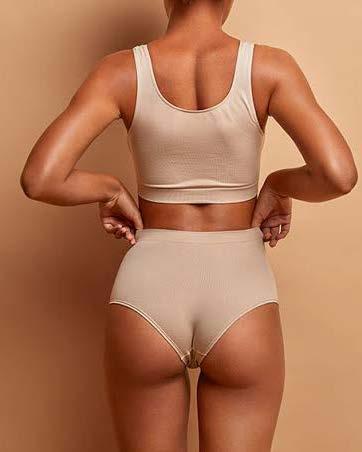
For most people, the inner legs just below the thigh crease are extremely sensitive to touch; it’s like the highway to your genitals. To get your partner to moan, try petting, kissing, or stroking the fleshy region during foreplay.

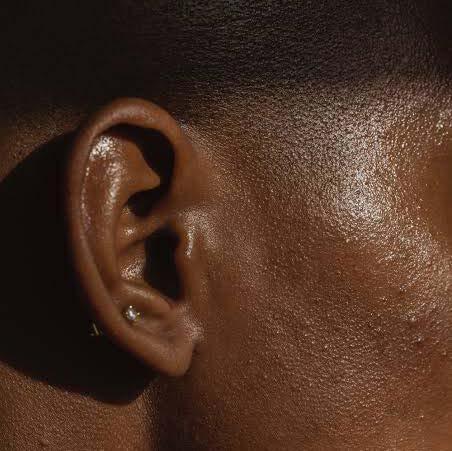
The ears are like erogenous zones 101 due to their abundance of sensory receptors. As they pleasure you down below, try delicately tracing the outline of their ear canal with your finger or planting a kiss exactly behind.

The nipples are typically the centre of attention when it comes to erogenous zones on the breasts. This is because, to varying degrees, almost everyone has nipple sensitivity, ranging from extremely mild to relatively high (which can be heightened even more during periods of the menstrual cycle and pregnancy). Communication is essential in this situation because some people prefer gentle touches or kisses, while others prefer more extreme forms of stimulation, such as biting or using nipple clamps.
CONCLUSION

With their excellent texture for caressing, biting, squeezing, and spanking, the butt cheeks remain one of the most soughtafter erogenous zones. It’s common for people to slap each other during sex because this area contains a lot of muscle and fat, and most people can handle a little more vigour. Try stimulating the cheeks in different spots, starting from the fleshy centre and ending at the point where the thigh and butt connect, if your partner has permitted you to do so.
Men come this way. The entire penis is a recreational area, but there’s one particular location that everyone ought to be aware of. Like the ultimate feel-good button, the frenulum is found on the underside where the head joins that shaft. Significantly for those who have had their foreskin removed—and for those who have not— stirring this region feels fantastic. However, it is significantly more sensitive in noncircumcised individuals. To impress your lover, keep your touch extremely light and switch up your fingertips, licks, and strokes.

Naturally, one of the most well-liked feel-good locations on the female body is the clitoris, which has thousands upon thousands of nerve endings and indeed stretches from the little exterior nub we all know to far back in the vagina. To get the clitoris ready for action, play with a few of the other erogenous zones before initiating some light stroking.
Since no two bodies are alike, no erogenous zone map works for everyone. For this reason, you shouldn’t feel bad about yourself if you’re not into something or no longer appreciate something you liked yesterday; after all, that’s what makes erogenous zones so interesting!

That is among the reasons why butt stuff is so popular. One of the most stimulating erogenous zones for men is the walnut-sized prostate gland, which may be located by putting a finger approximately two inches in the anus and feeling toward the belly button. No matter their orientation, everyone should explore this area (if they’re comfortable enough) because it can be really enjoyable to stroke, tap, rub, and, yes, milk.

It can be challenging to dress comfortably and still look stylish when the sun is high in the sky and the warmth rises. But you can beat the heat and still appear effortlessly stylish with the appropriate knowledge. The secret to looking stylish in the heat is to choose light fabrics with care and style them chicly. When you get the hang of dressing for the heat, you can show off your unique style and stay cool. Fortunately, there are a plethora of clothing alternatives that make it possible to appear effortlessly stylish and beat the heat. This article will provide six techniques to stay cool in this hot weather without sacrificing your fashionable look!
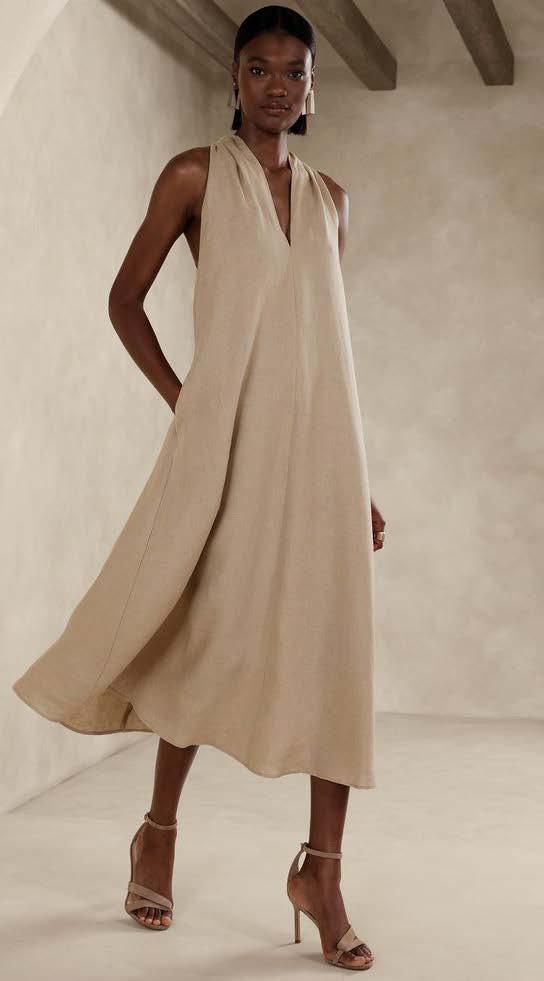
1.
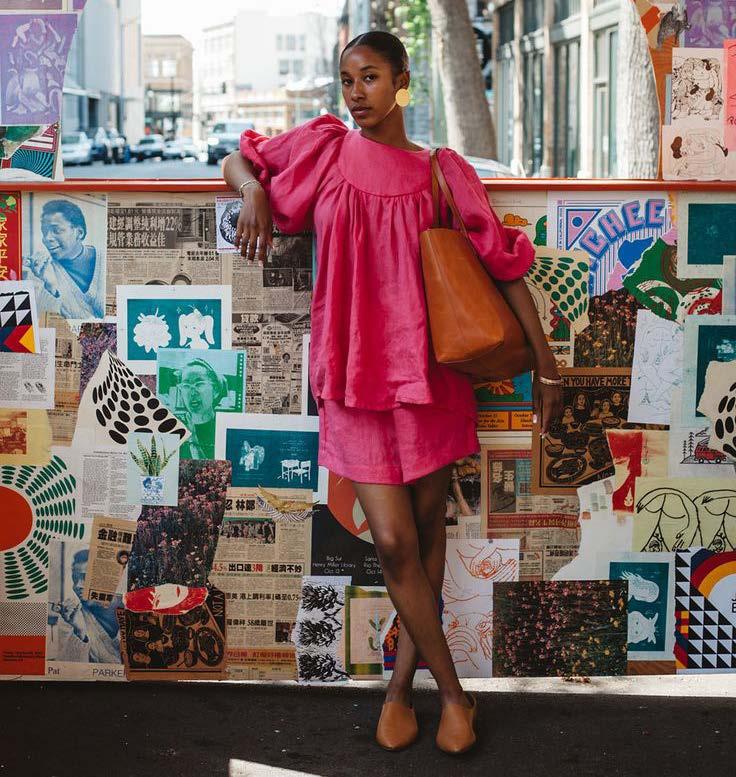
Choose apparel composed of breathable materials, such as jersey, cotton, or linen. You won’t feel constrained by these materials or sweat in the heat. Even on a hot day, they are excellent for looking put together and staying cool. You might try to find skirts, shirts, and dresses made of linen or cotton. Alternatively, choose a simple-cut jersey dress you could wear on a hot day. On a hot day, linen or cotton shorts are excellent for staying cool. Jersey or linen t-shirts and collared shirts work well, too.
Wear a flowing sundress composed of breezy rayon or cotton to embrace a carefree style. To reflect the spirit of the warmer months, go for vivid hues or fun designs. Wear a floppy hat and oversized sunglasses for added flair, and accessorise the ensemble with chic and comfy strappy sandals.
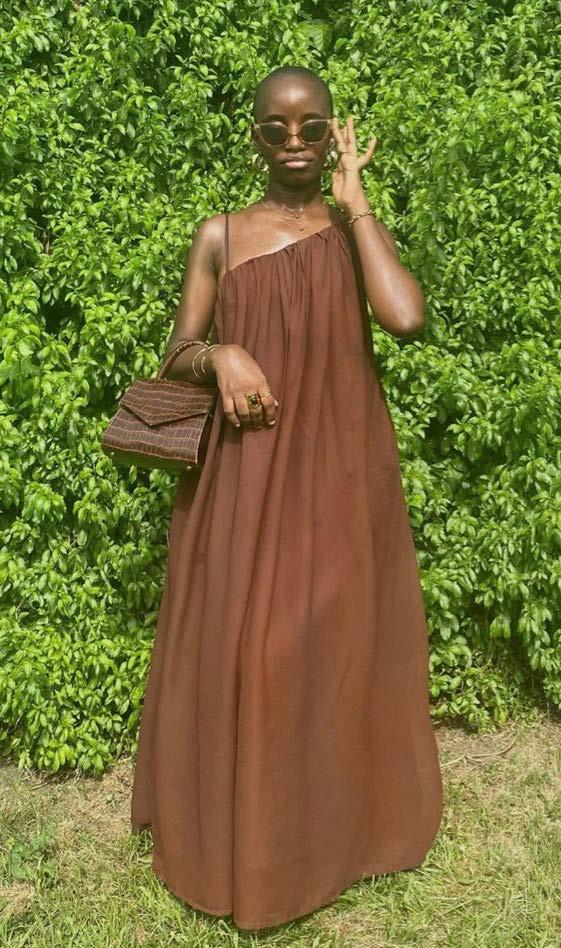
Look effortlessly put together with an off-theshoulder blouse and a flowing maxi skirt. This combo will keep you comfy while exuding a stylish and carefree vibe. Sandals, hoop earrings, and layered bracelets finish off the bohemian style.

Wide-leg jumpsuits in lighter hues are a striking fashion statement. In addition to being fashionable, jumpsuits keep you cool and facilitate movement. Wear this ensemble with wedge shoes or heeled sandals to make an elegant entrance for a night out.


You can achieve an elegant ensemble by teaming a vintageinspired blouse with a traditional, highwaisted A-line skirt.
Tuck a blouse in an ideal summer fabric like cotton or chiffon into the skirt for a flattering silhouette. Accessorise with vintage pieces such as a headband and cat-eye sunglasses to complete the vintage look.

Workout clothes can be more comfortable and breathable if you work outside a lot or spend a lot of time outside during the hot weather. Many workout clothes are composed of fabrics that absorb perspiration and keep you cool as you work out. Workout attire is frequently designed to be both cosy and convenient to wear throughout the day. It might not be appropriate if you work in an office or other professional situation. However, you can get away with wearing your workout attire if you have a relaxed day planned or are running errands throughout the day.
Keeping these pointers in mind will make it simple to put together ensembles that will keep you stylish and cool throughout the hot weather. Always keep in mind that you can dress for the heat by choosing clothes with cool fabrics and cuts, as well as styles tailored for the sun. Remember that you can complete any ensemble by accessorising with items that will keep you stylish and cool in this hot weather.

In a post-Bohemian Rhapsody world, no one expects any sort of critical eye from big-screen music movies, but Bob Marley: One Love is polite to the point of banality. The doting biopic depicts several years in the life of Bob Marley but doesn’t manage to say a single thing about the man other than he seemed like a pretty cool guy to be around.
Made in conjunction with the Marley estate — Marley’s son Ziggy, his widow Rita, and his daughter Cedella are producers on the project — One Love does feature wall-to-wall music by the reggae legend, so at least it has that going for it. But it’s a soundtrack in search of a film.
When One Love opens, Marley is already a superstar, so the filmmakers manage to sidestep all that messy getting-to-know-you business or learning about what really made him tick. It’s 1976, and Marley — played by Kingsley Ben-Adir, is getting ready to headline a concert for peace in Jamaica, as warring political parties have the island country on the brink of civil war. Tensions are high, but Marley insists on not backing down, even as he becomes a target for assassination and his wife (Lashana Lynch) is shot in the head by an assailant. (She lives.)
The buildup to the concert is presented as the narrative drive to the film, but the concert comes and goes, and then it’s off to London as Marley works on 1977’s Exodus album. And it’s here where we get loads of hang time in the studio with Bob, as he and his bandmates record, vibe together, and brush off clueless label executives, who are always an easy target in
these kinds of movies.
Marley wants to create, he wants to inspire, he wants to tour Africa. But there’s no infrastructure there, he’s told. “We can build it!” he offers. And so on: One Love doesn’t have any real insight into its subject, instead offering adulation and worship. He records, he performs, he fights through a cancer diagnosis. He keeps going, for his people, for symbolism.
One Love is directed by King Richard’s Reinaldo Marcus Green, who also co-wrote the screenplay with three others. It’s fueled by Marley’s music — No Woman No Cry, I Shot the Sheriff, Get Up, Stand Up, etc. — and there’s one of those montages that shows his music racing up the charts, a music biopic staple.
When it’s time to show his faults — an argument with his wife, a violent backstage attack on his tour manager — it treats them as blips on the radar, nothing a haze of smoke can’t fix.
Ben-Adir’s performance is strictly surface level, but the role as written doesn’t require much other than looking stylish, nodding his head and occasionally mentioning Rastafari. Adidas is given so much screen time it is practically a presenting sponsor.
There’s a nice moment late in the movie when Marley is singing Redemption Song around a campfire at home, one of the few organicfeeling music moments in the film. When did he write that one? His wife asks him, “My whole life,” Marley replies. That’s how One Love goes: It treats its subject as a mystic power, untethered from the ground, floating above the fray. It sees him as a myth, not a man.


Scan this with your camera or click to access the playlist (Youtube Music)

Scan this with your camera or click to access the playlist (Spotify)
Netflix’s live-action Avatar: The Last Airbender isn’t the flop that many were expecting from a streamer with a string of failed animation adaptations, and it’s certainly miles ahead of M. Night Shyamalan’s failed theatrical version, but it doesn’t really stand out on its own merits. In the current era of TV, IP reigns supreme, making memorable storytelling more of a suggestion than a priority, and Avatar: The Last Airbender joins the likes of Wednesday, The Rings of Power, and endless other series as serviceable (if not artistically significant) content.
For those who weren’t glued to their TVs in the mid-to-late 2000s and didn’t enjoy Nickelodeon’s acclaimed cartoon, Avatar: The Last Airbender takes place in a mystical, fantastical world. Part of the population, known as benders, can control one of four elements: earth, air, fire, and water. However, the powerful Avatar can bend all four, and they are tasked with maintaining balance in the world. One hundred years before the series takes place, this order was disrupted by the Fire Nation, who wiped out the Air Nomads in an attempt to kill the Avatar and attain worldwide dominance. Their plan failed, though, as the 12-year-old Avatar, Aang (Gordon Cormier), had fled before the invasion, only to get trapped in ice for a century as the war was waged.
A lot is going on in Avatar: The Last Airbender and the show stretches itself thin. The original series had 20 episodes per season; this version has eight. Though obviously not every storyline is included in this adaptation, it certainly crams in a large percentage of plot points. Some have more room to breathe than others. Avatar’s first episode is the series’ longest, and it comprises about three of the original show’s episodes; meanwhile, episode two stretches out the story of a single animated episode. A few Earth Kingdom escapades feel especially Frankenstein-ed together, with the main trio splintering into their own plots while Zuko and his trusted Uncle Iroh (Paul Sun-Hyung Lee) are on their own quest, and a trip to the Spirit World provides a strange detour. Things don’t quite coalesce, and it comes off as blatant box-checking so that this character or that plot point gets included, preemptively staving off potential fan disappointment.
Avatar also largely excels at bringing bending to life. It takes a lot of skill and planning to make people wielding CGI elements look realistic in any capacity, and the show succeeds. As in the cartoon, each element requires a unique fighting style, and the actors and stunt team really bring that to life. Liu’s Zuko mixes martial arts with firebending to make for some arresting fight scenes and Kiawentiio’s fluid motions when waterbending look entirely natural. The visual effects that create this fantasy world are undoubtedly impressive, from the construction of massive cities to the design of its creatures (Appa the sky

bison looks fantastic down to the smallest detail). There are a handful of painfully obvious green screens in the Fire Nation and when the gang is travelling by air, but they thankfully don’t factor in much.
The series is good at depicting its action, and it moves along with its story at a breakneck pace. We get from the South Pole to the North Pole in the span of eight episodes, and though it doesn’t always make the most narrative sense (or sometimes any at all), the show doesn’t stall. It’s watchable, easy entertainment, and sometimes it seems like the show
is expecting you not fully to be paying attention. Every character has a grating tendency to punctuate story beats with obvious comments, from Katara exclaiming, “Ugh, I don’t get it!” after messing up a water-bending move to Aang saying, “I’m really starting to see what kind of person [Zuko] is” after three episodes of interactions. The pattern gets increasingly eye-rollingly unforgivable, and it all but eclipses the show’s meaningful dialogue.
That issue shines a light on a bit of an open-ended question: who is this series for?
The original cartoon was for kids but held weighty themes, packaged and presented in a way that appealed to adults a la Harry Potter. The live-action series stars young actors and has juvenile characters, but its graphic action and overly dense plotting make it feel geared toward a slightly older demographic. It’s clear that Netflix wants to exploit the goodwill that countless fans have for the animated series, and the new series incorporates many of the aspects that made the original so popular, but it rarely—if ever—meets the standards set by the cartoon. Some scenes are recreated and repurposed in painstaking detail, from dialogue to blocking to camera shots, but that doesn’t add anything. There are ways to translate an animated series to the live-action medium, but the show doesn’t seem all that interested in exploring them. As a result, Avatar: The Last Airbender is fine, just fine, not stomping on the memory of its source material but not doing anything worthwhile with it.
